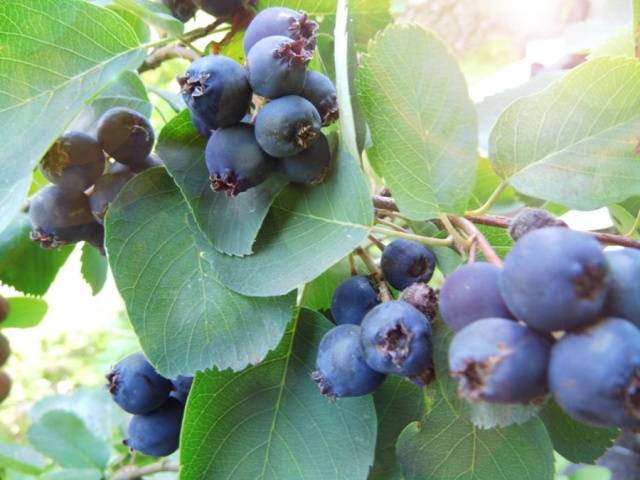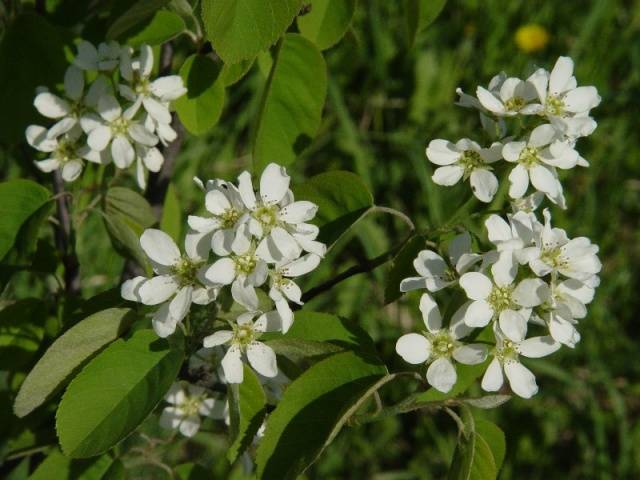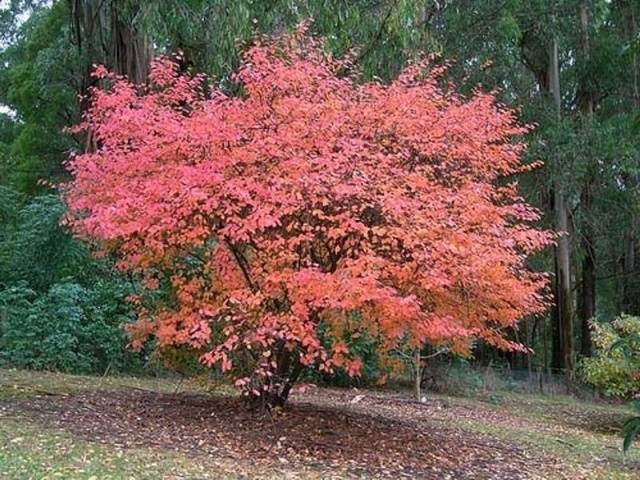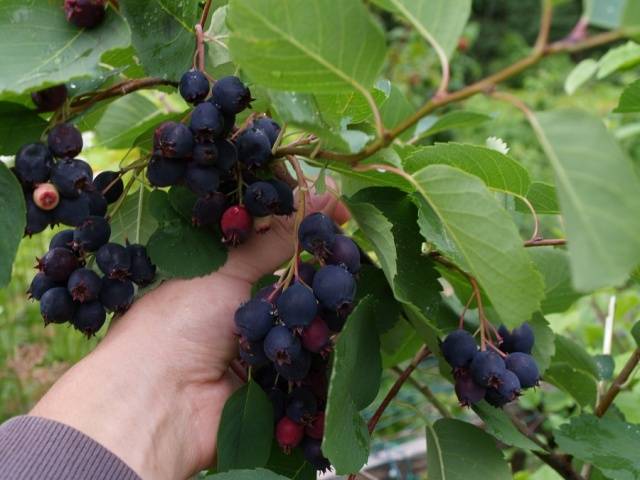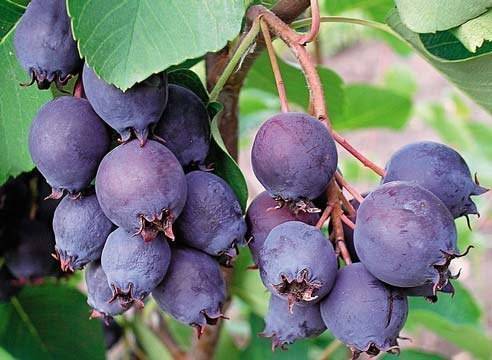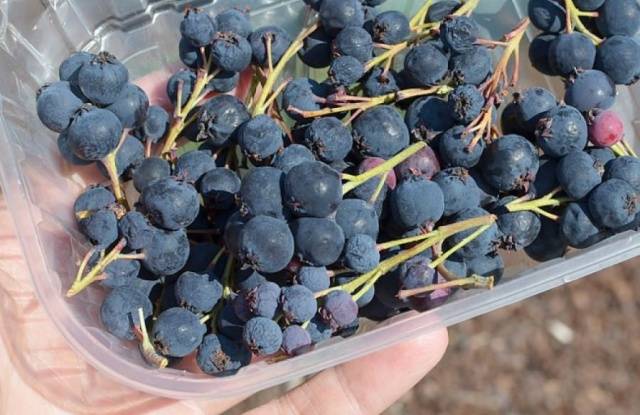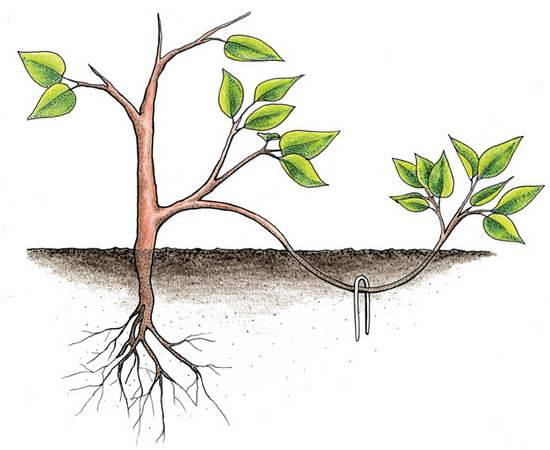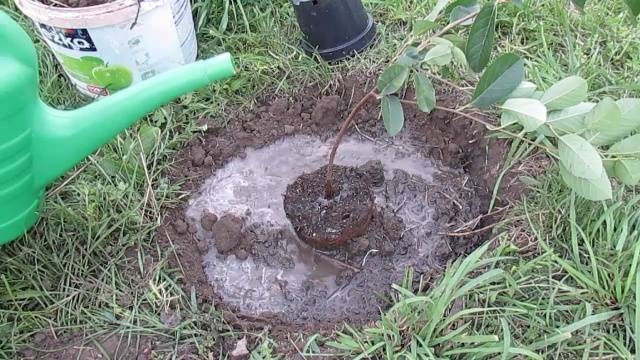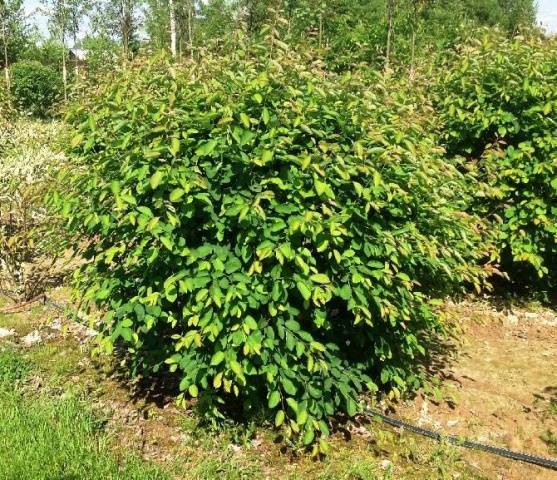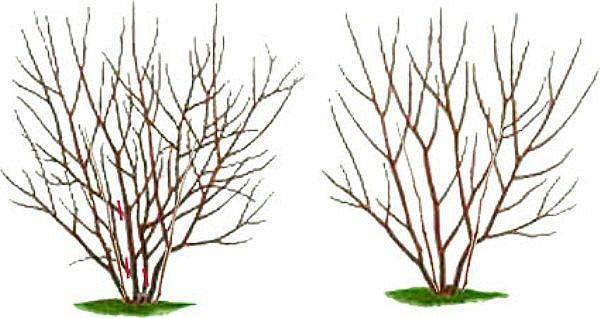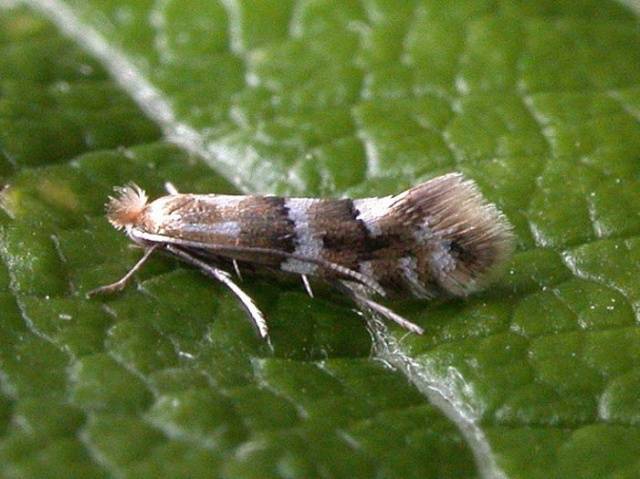Content
Irga canadensis is becoming popular due to the beneficial properties of berries. A detailed description of the varieties of canadian irgi will help summer residents navigate their choice, acquiring a seedling of an unpretentious and frost-resistant plant.
Distinctive characteristics of the species
Irga canadensis or canadensis is a tall shrub with 3-20 trunks, depending on the variety. The plant develops rapidly. Mature bushes grow up to 6 m, live up to 50 years. If the trunk dies off, a new one is formed. Most of the roots lie at a depth of 50 cm, some deepen to 1.5 m, the branches fall below 3 m. The diameter of the bush reaches 2.5-5 m. Shoots are actively rising from the roots.
The spreading crown of fruit varieties with drooping branches resembles an umbrella. The trunks are picturesquely curved, with a smooth warm brown bark. Young shoots are bright, reddish. Ovate finely serrated leaves 5-6 cm long on short, 1.5 cm petioles. The leaves are pubescent, with a silvery sheen, burgundy in autumn.
Flowers with white narrow petals, up to 2-2.5 cm in diameter, collected in brushes of 3-10 pieces, attract bees, are not afraid of frost -7 aboutC. Bloom from late April and bloom for 2 weeks.
The term "decorative" is often used to describe the Canadian fruit irgi. The plant is really beautiful, not only flowering. In early spring, the bush seems to be shrouded in a light fog when the buds open, the autumn crimson and the winding graphics of trunks and branches against the background of snow are picturesque.
A three-year-old bush of canadensis is beginning to bear fruit. The plant begins to actively bear fruit from 10 to 30-40 years of age. 6-18 kg of berries are harvested from one bush, depending on the variety. Rounded, pleasant-tasting apple-shaped berries weighing 1 g, 14-18 mm wide, ripen unevenly, from mid-July to late August. On the plant in summer, multi-colored berries with a bluish bloom hang: ripe dark purple, ripening blue and unripe pink. Berries contain 12% sugar, 1% fruit acids, 40% ascorbic acid, carotene, tannins and other active substances.
Sweet, slightly tart berries are rich in vitamins, have an anti-inflammatory effect, and affect metabolic processes.
Advantages of irgi:
- Large-fruited;
- Self-pollination;
- Annual stable yield;
- Undemanding to the soil;
- Survives in urban smoke conditions and effectively absorbs noise;
- Drought resistance and frost resistance: tolerates -40 aboutC;
- Fast growth, 40 cm per year.
Among the shortcomings are called:
- Extended fruiting;
- Difficulty with uprooting: the growth takes a long time to break through.
Irga Canadian love to use in landscape design. Due to the active growth, the bushes are planted as a hedge every 0.7-2 m.You should not wait for a crop with such a planting scheme, but a fence with lush greenery will quickly form. Irga Kanadskaya is great as a soloist, acts as a textured element in landscape compositions of a group of different plants.
What varieties belong to the type of canadian irgi
Irga - trees and shrubs from the Apple family, found in the wild in Europe and Asia. Plants were domesticated for gardening art, as tall, up to 8-11 m Lamarck's irgu. Particular success has been with Canadian breeders who have developed large-fruited varieties with tasty berries based on shrubs growing in North America.
Pembina
A productive shrub grows in width and height up to 5 m, forms little growth. Oval berries up to 1.4-1.5 cm in diameter, sweet. The variety can withstand severe frosts.
Thyssen
The earliest variety of Canadian Irgi, blue berries are harvested at the end of June. Due to the early flowering in the northern regions, the plant can fall under return frosts. Frost resistance of a shrub growing up to 5 m in height and 6 in width - up to 28-29 aboutC. Large, juicy berries of 17-18 mm, pleasant taste, with an original refreshing acidity.
Smokey
A very common, high-yielding, latest variety, grown in large areas in Canada. The bush is low, 4.5 m, the same width, drooping branches, forms a lot of growth. The plant is resistant to diseases, blooms by the end of May, avoiding frost. Berries 14-15 mm, covered with dark blue skin, juicy, with tender, fleshy pulp. Up to 25 kg of sweet, without astringency, berries are harvested from one plant, delicious due to the balance of sugars and acids.
Sturgeon
The undersized irga is a recent success of breeders. Grows up to 2.5-3 m, bears fruit stably. Berries on long clusters, tasty, sweet, large.
Northline
A multi-stemmed plant with vertical trunks - 20-25 pieces, with a circumference of up to 6 m, rises up to 4 m. Creates a lot of growth. This variety requires a pollinator. Egg-shaped berries are large, with a black-blue skin, 16 mm, ripen together.
Reproduction of irgi canadian
There are several ways to propagate a favorite variety: green cuttings, seeds, division of the root system, layering and shoots.
- 12-15 cm cuttings are cut from the last decade of June to the second decade of July from the tops of 5-6-year-old branches. Rooted in greenhouses, planted in spring;
- Berries for seeds are selected from the most productive bushes, they are allowed to fully ripen. Sow immediately in the fall, covered with foil. If sowing in spring, the seeds are stratified for 80-90 days in the basement, placed in a bag of wet sand;
- Having dug up the plant, the rhizome is divided with a sharp tool and long branches are cut off. Remove old branches and place delenki in new holes;
- In early spring, near the lower healthy 1-2-year-old branches, a groove is dug, where the branch is laid, pinning with garden staples. Cover with earth and watered. Plants develop from the buds;
- In autumn or spring, young shoots are separated from the mother bush.
Planting and caring for the Canadian Irga
Planting a non-capricious Canadian Irga is a standard procedure. Any planting period, depending on the climate of the region. In the south and in the middle lane, they are planted in the fall, until November. In areas with early frost, it will be most appropriate to plant Canadian Irga in the spring.
Site selection and preparation
Irga of fruit varieties grows on all types of soils, in shady places, it does not care for cold winds, but it is necessary to avoid swampy areas. Bushes can be planted from the north of the site both as a fruit crop and as a hedge. If an irgi is grown for picking berries, the holes are placed at a distance of 4-5 m. For pollinators, sea buckthorn, rose hips, and other varieties of irgi are selected. Although the varieties are mostly self-fertile, the yield will increase.
How to choose seedlings
When buying an irgi seedling not in a container, make sure that the roots are fibrous, fresh, not shorter than 20 cm.The stem is without scratches, outgrowths, with smooth bark and swollen buds, at least 80-100 cm high. The best ones are 1-2 years old seedlings.
Planting procedure irgi canadian
A hole is dug in advance. Drainage is laid at the bottom. The depth of the hole for the bush is 0.5 m, the width is 0.6-0.65 m. The substrate is prepared on the basis of soil, adding humus, peat and sand. They also put 400 g of superphosphate, 150 g of potassium sulfate and 100 g of lime.
- The root collar is not deepened;
- The seedling is tilted at an angle of 45 degrees;
- Having covered it with soil, watered, as in the photo of a Canadian irgi seedling, the trunk circle is mulched;
- Shoots are shortened by a third, up to 15-20 cm, or 5 buds.
How to transplant an adult irgi bush to a new place
Moving the irgu, the roots are carefully dug up and lightly cut with a sharp tool. Old branches and trunks are removed. A shrub over 6 years old takes roots deeper than 1 m and far in width. It is better to keep a lump of earth near the roots, at least 100 x 100 cm in size, up to 70 cm high. The pit should be larger and deeper in volume. The transplanted irga is watered and mulched.
Caring for Canadian Irga
Planting and caring for the Canadian Irga is simple. With good care, undemanding fruit varieties reach their full potential.
Watering
The developed roots of the irgi absorb the necessary moisture if it rains regularly. Irga of all varieties is watered only with prolonged drought: 2 waterings per month, 20-30 liters each, through a small diffuser, are enough. Young bushes are given the same rates.
Weeding and loosening the soil
The soil in the near-trunk circle is loosened after watering, removing weeds... Shallow weeding contributes to greater air permeability of the soil and better vital activity of the roots.
Top dressing of canadian irgi during the season
Fertilizing the plant improves its development, productivity and quality of berries. Feeding begins 2-3 years after planting.
- In early spring, up to 50 g of any nitrogen fertilizer is introduced into the trunk circle when loosening;
- 2 weeks after flowering, foliar feeding of the irgi bush is carried out, dissolving 1-2 g of boric acid, zinc sulfate and copper sulfate in 10 liters of water;
- During the summer season, the bush is fed monthly with organic matter: infusions of mullein, bird droppings or cut grasses. The solutions are introduced into 2-3 annular grooves along the projection of the crown;
- Potash fertilizers (25-50 g) and 100 g of superphosphate are fed to irga in autumn. Potash preparations can be replaced with 0.5 liters of wood ash;
- According to gardeners' reviews about Irga Canadian, it is more convenient to feed the plant with complex fertilizers.
Pruning: terms and rules
Pruning increases the yield of the irgi bush. The plant consists of 10-15 shoots, which are periodically renewed, replacing with shoots. The signal to remove the old shoot is a small growth per year - only 10 cm. Cut the fruit irga before sap flow.
- Sanitary pruning: removal of damaged branches thickening the crown, shoots are carried out in early spring;
- Cutting off young shoots, 1-2 are left to replace old ones that are more than 10-12 years old;
- Vertical shoots on young bushes are cut by a quarter of the growth of the previous year;
- To stimulate the growth of the bush to the sides, young lateral branches are shortened;
With rejuvenating pruning of fruit varieties, shoots with a weak increase per ring are removed, and the rest are shortened to 2.5 m;
Preparing canadian irgi for winter
In the fall, irgu is prepared for a dormant period. After leaf fall, the branches are examined and dry and broken ones are cut off. All the foliage is removed, the site is shallowly dug up. A frost-resistant plant is not covered. Young seedlings are covered with snow, which is removed in spring.
The nuances of planting and caring for Irga Canadian in the Moscow region
In the Moscow region, all varieties of irgi bushes are planted in the spring. The plant does not need shelter.Only in frost without snow, the seedling is covered with agrofibre on the hay. An adult irgi bush is not covered. The near-stem circle of a fruit variety plant is mulched with humus, covered with snow.
What diseases and pests can threaten the culture
Diseases | Symptoms | Control measures | Prophylaxis |
Tuberculariosis | Crimson shoots and foliage, wither. There are red growths | Affected shoots are removed and burned. Irga is treated with 1% Bordeaux liquid or copper sulfate 2 times after 10 days
| Cleaning fallen leaves and damaged branches |
Gray rot | The base of the shoots and petioles, the berries are covered with dark wet spots, then a gray bloom | Irgu and the plant's trunk circle are sprinkled with wood ash or colloidal sulfur
| Reduces volume and frequency of watering |
Leaf spot | On the leaves, spots of different colors, depending on the lesion by the type of fungus | Treatment with fungicides Horus, Skor, Topaz 2-3 times a week | Spraying with copper sulfate or Bordeaux liquid before bud break |
Moniliosis | Young branches dry after flowering | The diseased parts of the irgi bush are removed and burned | In early spring, the bush is treated with copper-containing preparations |
Pests | Signs | Control measures | Prophylaxis |
Leaf roll | The leaves are folded, with caterpillars | Insecticide treatment Ditox, Alatar | In the bud phase, irgu is sprayed with: Nexion |
Irrigated seed-eater | The beetle makes a clutch in the ovary. The berries fall | After flowering sprayed with: Karate, Decis | Remove fallen unripe berries |
Hawthorn | Caterpillars eat leaves | Sprayed on buds: Nexion | Arrivo, Decis are treated on unblown buds |
Apple aphid | Young leaves are twisted, inside the aphid colony. Leaves dry | Spray the affected tops by dissolving 300 g of laundry soap in 10 liters of water | On unblown buds, they are sprayed with insecticides (Sumition) |
Speckled moth | Larvae feed on leaves, gnaw holes | Apply insecticides Konfidor-Maxi, Mospilan, Kinmiks
| After collecting the berries, they process: Bitoxibacillin, Lepidocide |
Conclusion
Guided by the description of the varieties of canadian irgi, choose a suitable seedling, preferably with a closed root system. Irga is unpretentious, resistant to diseases and the vagaries of the weather. A vitamin harvest of healthy berries, even from one plant, will delight for many years.
